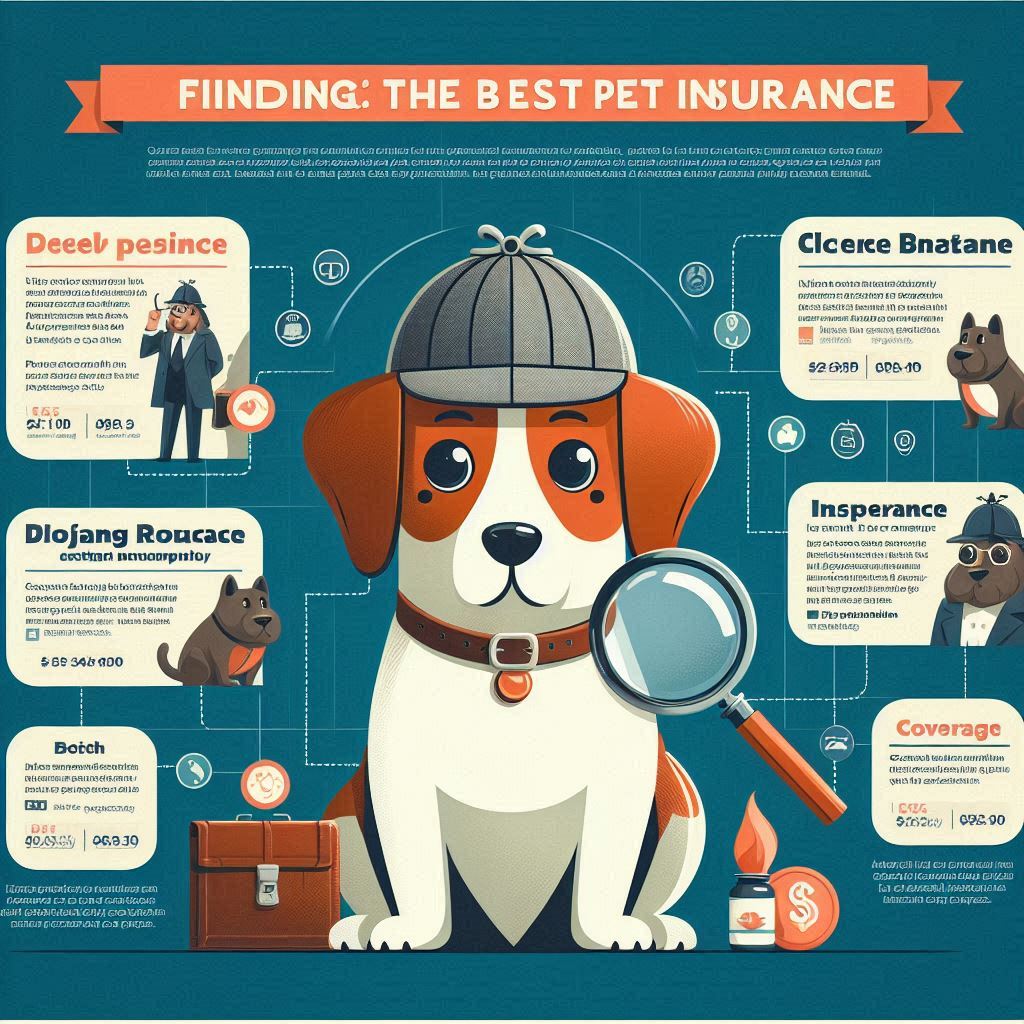Our dogs are cherished members of the family, and just like any family member, we want to make sure they’re protected. Unexpected vet bills can be a huge financial burden, and that’s where pet insurance comes in. But with so many options available, finding the “best” pet insurance for your dog can feel overwhelming.
Fear not, fellow dog lovers! This guide will walk you through everything you need to consider when choosing a pet insurance plan, ensuring your furry friend gets the care they deserve without breaking the bank.
Step 1: Weigh Your Needs and Budget
Before diving into specific plans, take a step back and consider your priorities. Here are some key questions to ask yourself:
- What level of coverage do I need?
Accident and illness (accident-only) plans cover accidents (like broken bones or ingested objects) and illnesses (like cancer or allergies). Accident-only plans are generally cheaper, but illnesses can be far more expensive. Wellness plans cover preventative care like vaccinations, spaying/neutering, and dental cleanings. These plans may not be necessary for young, healthy dogs, but can save money in the long run. - What’s my budget?
Pet insurance premiums vary depending on factors like your dog’s breed, age, location, and the level of coverage you choose. Determine a comfortable monthly or annual budget to guide your search. - What’s my deductible preference?
The deductible is the amount you pay upfront before the insurance kicks in. Higher deductibles typically mean lower premiums. Consider your risk tolerance and potential vet costs when deciding on a deductible.
Step 2: Understanding the Pet Insurance Lingo
Here’s a quick breakdown of some key terms you’ll encounter:
- Reimbursement: This is the most common payout method. You pay the vet bill upfront and then get reimbursed by the insurance company according to the policy terms.
- Direct Pay: The insurance company pays the vet directly, reducing your upfront costs. Not all providers and vets offer this option.
- Annual/Lifetime Maximum: This is the maximum amount the insurance company will pay out per year or over your dog’s lifetime for covered conditions.
- Copay: Similar to a human copay, you pay a fixed amount for covered services in addition to your premium and deductible.
- Pre-existing Conditions: These are conditions your dog had symptoms of or received treatment for before the policy’s effective date. Most plans exclude pre-existing conditions.
Step 3: Researching Pet Insurance Providers
Now that you have a better understanding of your needs and the pet insurance landscape, it’s time to explore providers! Here are some resources to get you started:
- Review Websites: Sites like NerdWallet, Forbes Advisor, and Pawlicy Advisor offer reviews and comparisons of popular pet insurance companies.
- Comparison Tools: Several online tools allow you to compare quotes from multiple providers simultaneously. Be aware that not all insurers participate in these tools, so you may need to get quotes directly as well.
- Pet Breeder/Rescue Recommendations: Your dog’s breeder or rescue organization may have experience with different pet insurance providers and can offer insights.
Step 4: Decoding the Policy Details
Once you have a shortlist of potential providers, delve deeper into their plan offerings. Here’s what to pay close attention to:
- Coverage Details: Carefully read the policy documents to understand what’s covered (accidents, illnesses, specific procedures) and what’s excluded. Look for exclusions related to your dog’s breed or pre-existing conditions.
- Reimbursement Percentage: This is the percentage of covered costs the insurance company will reimburse you for. Most plans reimburse between 70% and 90%.
- Reimbursement Limits: As mentioned earlier, there are annual and lifetime maximums. Make sure these limits are high enough to cover potential future vet bills.
Step 5: Getting a Quote and Enrolling
Once you’ve identified a plan that aligns with your needs and budget, it’s time to get a quote. Most providers offer online quote tools where you can input your dog’s information and receive a personalized estimate.
Before enrolling, make sure to:
- Read all policy documents thoroughly.
- Understand the waiting periods. There are typically waiting periods (30-90 days) before coverage kicks in for accidents and illnesses.
- Ask any questions you may have. Most companies have customer service representatives who can clarify any doubts.


